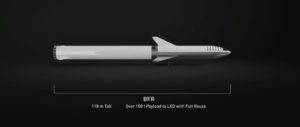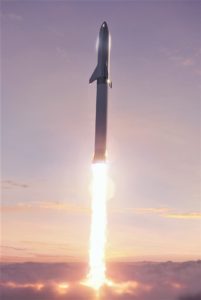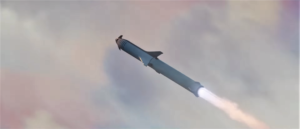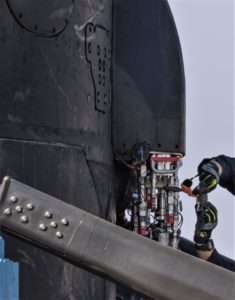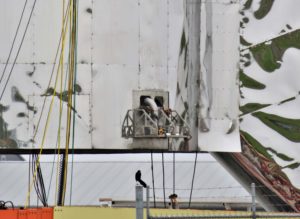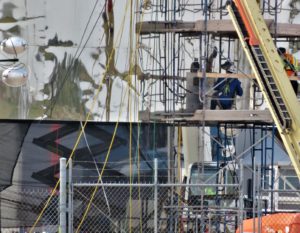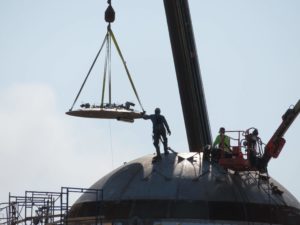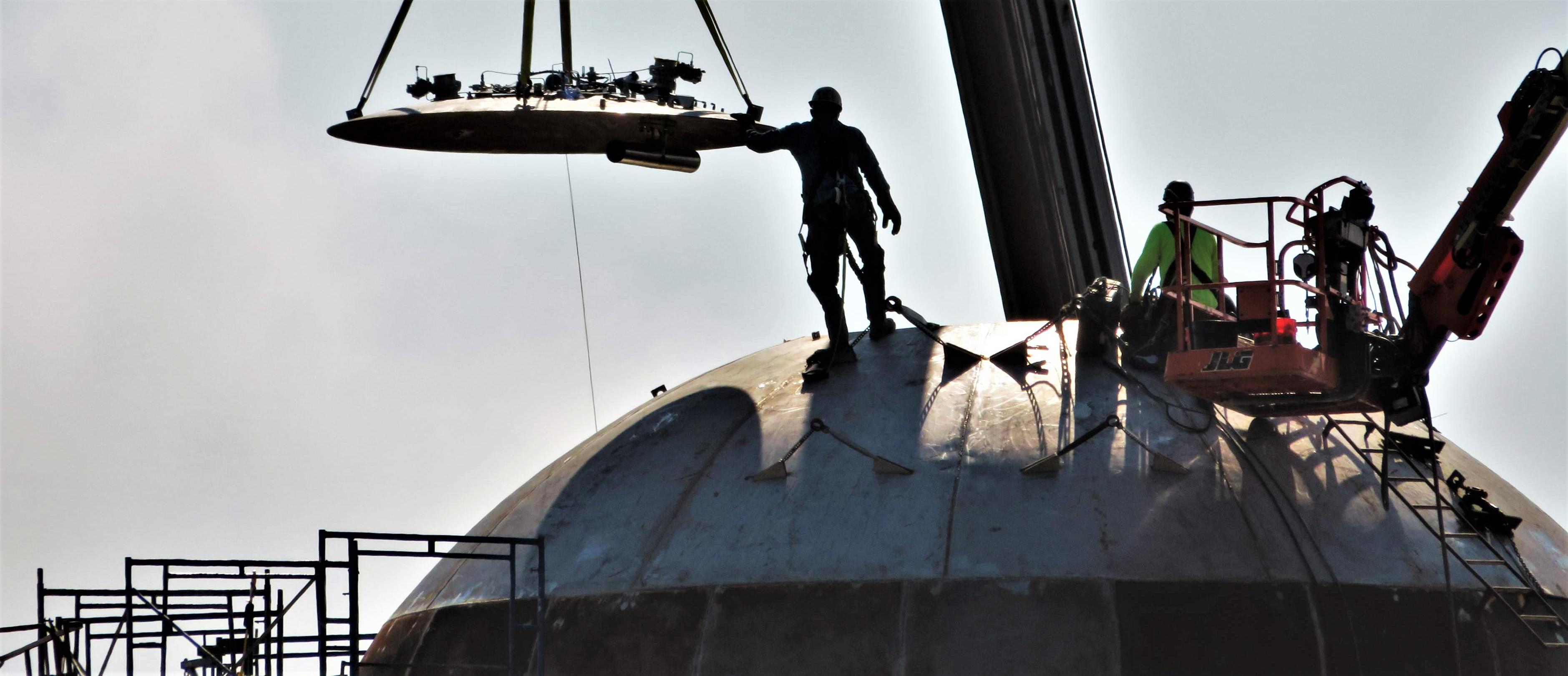

News
SpaceX’s Starship prototype is looking increasingly rocket-like as hop test pad expands
As SpaceX’s South Texas operations continue full steam ahead in pursuit of the first integrated hop tests of a full-scale Starship prototype, the company’s Starhopper and its complementary launch/hop pad are dramatically and visibly evolving on a daily basis.
This week’s progress has been signified by the installation of familiar rocket hardware on the Ship and a burst of construction – centered around pipelaying, plumbing, foundation work, and berm-building – at its pad. Just a few hundred miles north of Boca Chica, SpaceX’s team of propulsion engineers and technicians reached their own dramatic milestone, conducting the first static fire of a finalized version of the Raptor engine set to power Starship and Super Heavy (formerly BFR).
2-4-2019#SpaceX #TheFuture pic.twitter.com/0YBxk5QXD3
— Austin Barnard🚀 (@austinbarnard45) February 5, 2019
A pad fit for a Starhopper
In the last ~10 days alone (Jan 24-Feb 4), SpaceX pad construction workers and contractors transformed the former dirt mound from a generally flat, planed surface with a spattering of shipping containers and building materials into a hive of welding rigs, propellant and water tanks, major plumbing progress, shaped earth, and the beginnings of new concrete foundations. Thanks to local student Austin Barnard’s reliable drone photography, that pad-specific progress can be more properly visualized.


Taken on January 24th and February 4th respectively, the devil is definitely in the details when it comes to SpaceX’s prospective Starhopper pad development. Most notable is the progress made with the rapidly developing propellant plant and ground systems infrastructure in the left half of the images, marked by hundreds of feet of freshly-installed piping meant to support the process of fueling Starhopper with liquid methane and oxygen. For a rocket as powerful as Starhopper (even with just three Raptor engines), cooling both the propellant and the concrete launch and landing pad is no less important, visible in the shape of three large water tanks (lefthand foreground) and a smaller radiator stack (just to the right of two taller, skinnier white tanks.
Aside from the rapid rise of the first BFR propellant farm and its supporting equipment, SpaceX has progressed into the installation of a trio of concrete foundations just to the right of the dirt berm and propellant tank area. Standing as close as it is to said propellant tanks, it seems unlikely that the new foundation-laying is related to the pad (or a stand) meant to support early Starhopper hop tests, although SpaceX’s Falcon 9-era Grasshopper and F9R hop test vehicles operated about the same distance from its propellant infrastructure. SpaceX’s South Texas site also features a sort of satellite pad at its east end (the right side in attached photos) that could have a future as an integration hangar or a secondary landing zone to allow for Starhopper to perform divert tests.
- Rockets are perhaps even more capital intensive. (SpaceX)
- BFR’s booster is at least three times more powerful still than BFS at liftoff. (SpaceX)
- BFR (2018) breaks through a cloud layer shortly after launch. (SpaceX)
- (SpaceX)
- BFR’s booster, now known as Super Heavy. (SpaceX)
Depending on whether SpaceX actually intends to develop the land shown above into an actual full-scale launch facility for BFR (Super Heavy and Starship), it could also remain generally unchanged until Starhopper’s hop test program has been run to completion, at which point everything seen above would likely be rebuilt from scratch to accommodate for any drastic changes in function. SpaceX’s Boca Chica might simply be too small to support a pad capable of launching Super Heavy (nearly twice as powerful as Saturn V at full thrust), measuring in at considerably less than ~10 acres of usable area compared to LC-40’s ~20 acres and Pad 39A’s ~50+ acres. CEO Elon Musk has also hinted at using a giant floating platform for early orbital BFR launches, although that might prove even harder (and more costly) than building a traditional land-based pad.
Becoming a rocket
Meanwhile, the aft engine/fin/tank section of SpaceX’s Starship prototype (unofficially nicknamed Starhopper) has experienced a stream of hardware additions and improvements, modifying its relatively awkward and unfinished steel base with what appear to be Falcon 9-sized quick-disconnect umbilical panels, a functional propellant tank header, and mounting hardware for carbon-overwrapped pressure vessels (COPVs). By using hardware that is proven and easy to manufacture, SpaceX can save a huge amount of time that would otherwise need to be spent engineering subassemblies that (at risk of undervaluing the challenge) are generally known-quantities – more a matter of time and effort than an actual technical hurdle.
- B1048’s second umbilical panel (blue for oxygen). (Pauline Acalin)
- Falcon 9 B1048 displays one of two umbilical panels (red for kerosene) after its first launch. (Pauline Acalin)
- Starhopper’s partially completed umbilical panel as of Feb. 4th. (NASASpaceflight – bocachicagal)
- A SpaceX technician or contractor is pictured here cutting out sections of Starhopper’s steel hull to route umbilical panel piping. (NASASpaceflight – bocachicagal, 02/03/19)
- Starhopper also had a tank header installed on February 5th, complete with pressure regulation and propellant feeding hardware. (NASASpaceflight – bocachicagal)
While they are clearly still in a rough, unfinished form, Starhopper’s umbilical panels are already easy to recognize when compared alongside Falcon 9’s iconic red and blue panel pairs. In essence, whereas Starhopper has been a largely unknown quantity with no familiar aspects since it began to come together late last year, the Starship prototype has recently had hardware installed that is finally revealing subtle SpaceX signatures in its design and assembly.
Check out Teslarati’s newsletters for prompt updates, on-the-ground perspectives, and unique glimpses of SpaceX’s rocket launch and recovery processes!
News
Tesla UK sales see 14% year-over-year rebound in June: SMMT data
The SMMT stated that Tesla sales grew 14% year-over-year to 7,719 units in June 2025.

Tesla’s sales in the United Kingdom rose in June, climbing 14% year-over-year to 7,719 units, as per data from the Society of Motor Manufacturers and Traders (SMMT). The spike in the company’s sales coincided with the first deliveries of the updated Model Y last month.
Model Y deliveries support Tesla’s UK recovery
Tesla’s June performance marked one of its strongest months in the UK so far this year, with new Model Y deliveries contributing significantly to the company’s momentum.
While the SMMT listed Tesla with 7,719 deliveries in June, independent data from New AutoMotive suggested that the electric vehicle maker registered 7,891 units during the month instead. However, year-to-date figures for Tesla remain 2% down compared to 2024, as per a report from Reuters.
While Tesla made a strong showing in June, rivals are also growing. Chinese automaker BYD saw UK sales rise nearly fourfold to 2,498 units, while Ford posted the highest EV growth among major automakers, with a more than fourfold increase in the first half of 2025.
Overall, the UK’s battery electric vehicle (BEV) demand surged 39% to to 47,354 units last month, helping push total new car sales in the UK to 191,316 units, up 6.7% from the same period in 2024.
EV adoption accelerates, but concerns linger
June marked the best month for UK car sales since 2019, though the SMMT cautioned that growth in the electric vehicle sector remains heavily dependent on discounting and support programs. Still, one in four new vehicle buyers in June chose a battery electric vehicle.
SMMT Chief Executive Mike Hawes noted that despite strong BEV demand, sales levels are still below regulatory targets. “Further growth in sales, and the sector will rely on increased and improved charging facilities to boost mainstream electric vehicle adoption,” Hawes stated.
Also taking effect this week was a new US-UK trade deal, which lowers tariffs on UK car exports to the United States from 27.5% to 10%. The agreement could benefit UK-based EV producers aiming to expand across the country.
News
Tesla Model 3 ranks as the safest new car in Europe for 2025, per Euro NCAP tests
Despite being on the market longer than many of its rivals, the Tesla Model 3 continues to set the bar for vehicle safety.

The Tesla Model 3 has been named the safest new car on sale in 2025, according to the latest results from the Euro NCAP. Among 20 newly tested vehicles, the Model 3 emerged at the top of the list, scoring an impressive 359 out of 400 possible points across all major safety categories.
Tesla Model 3’s safety systems
Despite being on the market longer than many of its rivals, the Tesla Model 3 continues to set the bar for vehicle safety. Under Euro NCAP’s stricter 2025 testing protocols, the electric sedan earned 90% for adult occupant protection, 93% for child occupant protection, 89% for pedestrian protection, and 87% for its Safety Assist systems.
The updated Model 3 received particular praise for its advanced driver assistance features, including Tesla’s autonomous emergency braking (AEB) system, which performed well across various test scenarios. Its Intelligent Speed Assistance and child presence detection system were cited as noteworthy features as well, as per a WhatCar report.
Other notable safety features include the Model 3’s pedestrian-friendly pop-up hood and robust crash protection for both front and side collisions. Euro NCAP also highlighted the Model 3’s ability to detect vulnerable road users during complex maneuvers, such as turning across oncoming traffic.
Euro NCAP’s Autopilot caution
While the Model 3’s safety scores were impressive across the board, Euro NCAP did raise concerns about driver expectations of Tesla’s Autopilot system. The organization warned that some owners may overestimate the system’s capabilities, potentially leading to misuse or inattention behind the wheel. Even so, the Model 3 remained the highest-scoring vehicle tested under Euro NCAP’s updated criteria this year.
The Euro NCAP’s concerns are also quite interesting because Tesla’s Full Self-Driving (FSD) Supervised, which is arguably the company’s most robust safety suite, is not allowed for public rollout in Europe yet. FSD Supervised would allow the Model 3 to navigate inner city streets with only minimal human supervision.
Other top scorers included the Volkswagen ID.7, Polestar 3, and Geely EX5, but none matched the Model 3’s total score or consistency across categories. A total of 14 out of 20 newly tested cars earned five stars, while several models, including the Kia EV3, MG ZS, and Renault 5, fell short of the top rating.
Elon Musk
Why Tesla’s Q3 could be one of its biggest quarters in history
Tesla could stand to benefit from the removal of the $7,500 EV tax credit at the end of Q3.

Tesla has gotten off to a slow start in 2025, as the first half of the year has not been one to remember from a delivery perspective.
However, Q3 could end up being one of the best the company has had in history, with the United States potentially being a major contributor to what might reverse a slow start to the year.
Earlier today, the United States’ House of Representatives officially passed President Trump’s “Big Beautiful Bill,” after it made its way through the Senate earlier this week. The bill will head to President Trump, as he looks to sign it before his July 4 deadline.
The Bill will effectively bring closure to the $7,500 EV tax credit, which will end on September 30, 2025. This means, over the next three months in the United States, those who are looking to buy an EV will have their last chance to take advantage of the credit. EVs will then be, for most people, $7,500 more expensive, in essence.
The tax credit is available to any single filer who makes under $150,000 per year, $225,000 a year to a head of household, and $300,000 to couples filing jointly.
Ending the tax credit was expected with the Trump administration, as his policies have leaned significantly toward reliance on fossil fuels, ending what he calls an “EV mandate.” He has used this phrase several times in disagreements with Tesla CEO Elon Musk.
Nevertheless, those who have been on the fence about buying a Tesla, or any EV, for that matter, will have some decisions to make in the next three months. While all companies will stand to benefit from this time crunch, Tesla could be the true winner because of its sheer volume.
If things are done correctly, meaning if Tesla can also offer incentives like 0% APR, special pricing on leasing or financing, or other advantages (like free Red, White, and Blue for a short period of time in celebration of Independence Day), it could see some real volume in sales this quarter.
You can now buy a Tesla in Red, White, and Blue for free until July 14 https://t.co/iAwhaRFOH0
— TESLARATI (@Teslarati) July 3, 2025
Tesla is just a shade under 721,000 deliveries for the year, so it’s on pace for roughly 1.4 million for 2025. This would be a decrease from the 1.8 million cars it delivered in each of the last two years. Traditionally, the second half of the year has produced Tesla’s strongest quarters. Its top three quarters in terms of deliveries are Q4 2024 with 495,570 vehicles, Q4 2023 with 484,507 vehicles, and Q3 2024 with 462,890 vehicles.
-

 Elon Musk4 days ago
Elon Musk4 days agoTesla investors will be shocked by Jim Cramer’s latest assessment
-

 News1 week ago
News1 week agoTesla Robotaxi’s biggest challenge seems to be this one thing
-

 Elon Musk2 weeks ago
Elon Musk2 weeks agoFirst Look at Tesla’s Robotaxi App: features, design, and more
-

 News2 weeks ago
News2 weeks agoSpaceX and Elon Musk share insights on Starship Ship 36’s RUD
-

 News2 weeks ago
News2 weeks agoWatch Tesla’s first driverless public Robotaxi rides in Texas
-

 News1 week ago
News1 week agoWatch the first true Tesla Robotaxi intervention by safety monitor
-

 News2 weeks ago
News2 weeks agoTesla has started rolling out initial round of Robotaxi invites
-

 Elon Musk2 weeks ago
Elon Musk2 weeks agoTesla to launch in India in July with vehicles already arriving: report

